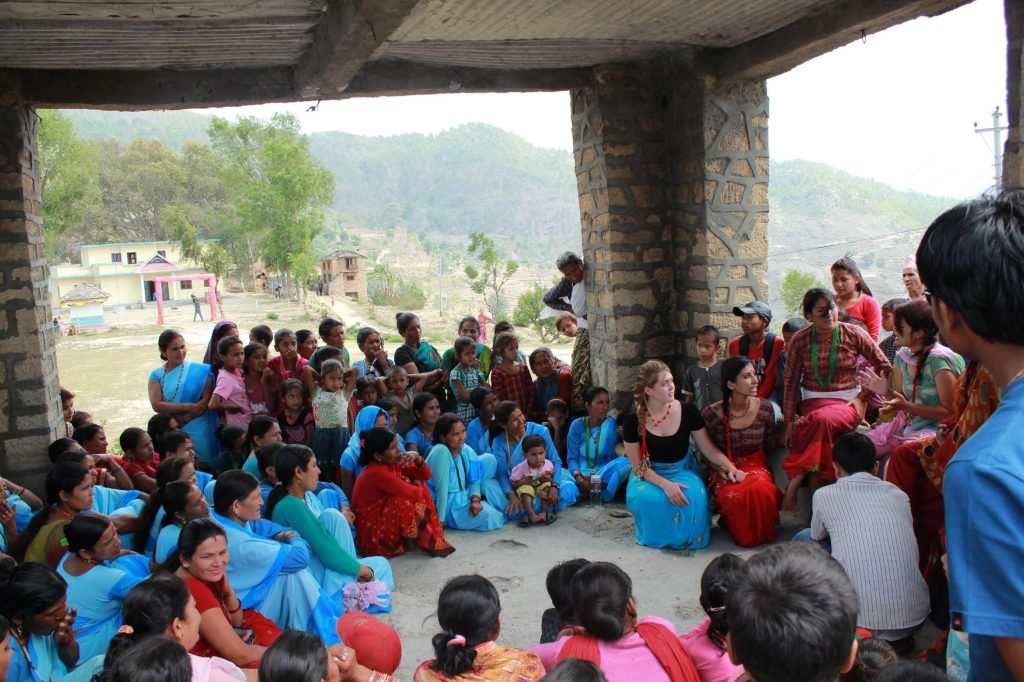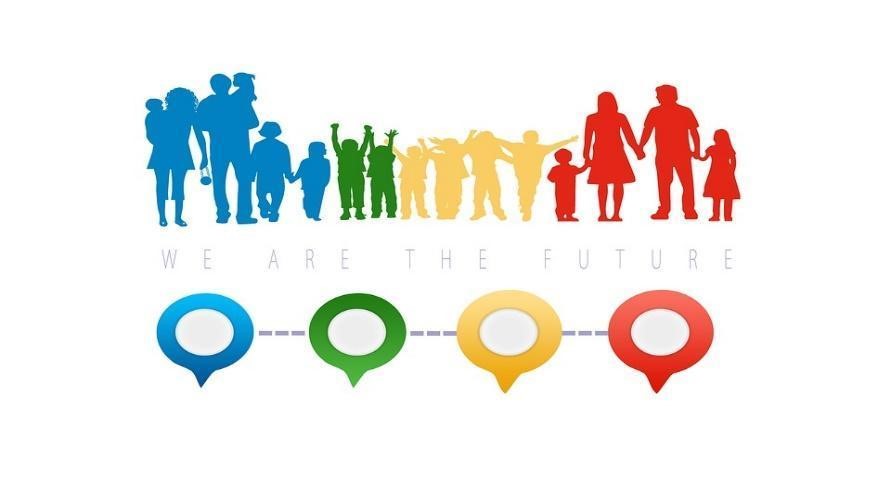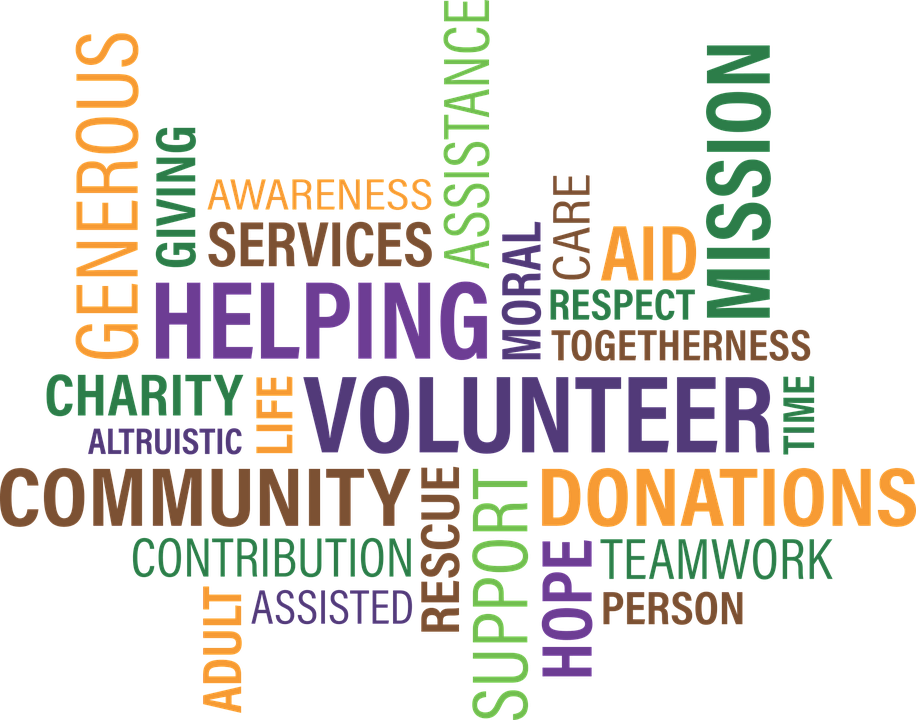The Psychological Connection
5.5 Transforming Communities
When we seek to address problems through community interventions, we discover the importance of the environment and potential community partners (Shinn & Toohey, 2003). In other words, we need to understand the context, or the neighborhoods and community settings, within which we place the community interventions. We can illustrate this with the following examples involving refugees and the approaches of several countries in dealing with this issue.
In Colombia, displaced persons can access housing when they flee political violence. However, this often places them in a segregated space where they share their day-to-day lives with other people who also suffer from post-traumatic stress. This also occurs in Spain with incoming refugees, who are received in publicly owned “reception centers” that cover their basic housing, food, and health needs. They can also access language courses, workshops to improve employability, and other programs that aim to ease their integration into a new country. However, only a small percentage of the residents in the reception centers are actually able to find work in Spain. Consequently, refugees have not been able to take advantage of the provided psychosocial resources. The case study below illustrates what needs to be taken into consideration when designing effective community interventions.
Case Study 5.6
The Importance of an Ecological Lens: A Family Seeking Asylum

The Patatanian family arrived in Madrid from Armenia, fleeing the harassment they suffered for religious reasons. They were received in the center of asylum seekers and provided accommodation and food. The parents received Spanish classes and made some contacts to learn about the labor market in Madrid while waiting for their case to resolve. Their children joined a school and, despite some difficulties adapting to a new country, made friends and did well enough academically. However, after nine months in Spain, they received a notification that the government did not recognize their refugee status. Consequently, although the Spanish teaching and employment guidance programs were well designed, the legal situation prevented the integration of the Patatanian family in Spain by not providing them the ability to apply for jobs. This resulted in the programs not achieving the objectives they were designed to meet.
The family, however, was fortunate to have another chance for a better life. Shortly after their experience in Spain, they decided to try again in Canada, where they were welcomed with not only the classes and resources but also the opportunities to fully participate in the workforce. The family members learned French and integrated very well with the community of Armenians living in Montreal. They also became friends with some neighbors and, little by little, could normalize their lives and find employment.
The case study of the family above shows why community interventions often need to transcend the individual level and deal with higher ecological levels. That is, it is about introducing deeper, second-order changes such as providing employment opportunities, that can have a more lasting and sustainable effect on individual behavior.
Let’s take child labor as another example. Child labor is a worldwide problem, affecting a large number of developing countries. It has a very negative impact on the cognitive, affective, and social development of the child. Programs can be developed that promote self-esteem, train social skills, or reinforce academic motivation. But, an effective intervention program also needs to focus on the children’s environment. If parents need to have their children work at very young ages to support the family as a whole, community psychologists need to take this into consideration and possibly find better ways for the parents to earn money so that they do not need to depend on their children to earn money, as illustrated in the case study below.

Case Study 5.7
Edúcame Primero

The Edúcame Primero is an initiative that aims to reduce child labor through psychoeducational strategies and community collaboration. Some of the strategies are oriented toward creating safe learning spaces in the school and the involvement of the family in the education of the children, as well as the collaboration with other agents in the community context. A central element of the program is the use of a methodology called Spaces for Growth (SfG): that is, complementary training workshops for formal education that include strategies for facilitating participation and active collaboration for children and young people, as well as their families and the staffs of educational centers. The SfG promote collaboration with different agents in educational and community contexts, namely: teachers, professionals, community leaders, and families. They participate in the design of the workshops, the configuration of the program content, and the adaptation of the program to the characteristics of the educational center. To this end, the involvement of parents, exchange forums with community agents, and regular meetings with staff of the educational centers are organized. Community readiness is evaluated by gathering information on (a) existing resources and key players in the community context, (b) previous experience in the implementation of intervention programs in child labor, (c) the level of awareness about child labor as a problem among community members and (d) the degree of community cohesion around existing needs linked to child labor. Finally, facilitators play a key role in the adjustment to the community context. They are professionals selected on the basis of their capacity for teaching children and young people, their knowledge of the community environments in which the SfG will be implemented, as well as their leadership skills (e. g., abilities for community mobilization). The Edúcame Primero program has proven to be a good practice in the prevention of child labor, with positive results in terms of prevention and reduction of child labor. A video of the Edúcame Primero is available here.
In Latin America, these types of intervention efforts have been developed by international organizations, such as the International Labor Organization (through the International Program on the Elimination of Child Labor), in collaboration with national governments and other third-party entities. In the last two decades, these international organizations have designed and implemented programs that have resulted in the worldwide prevalence of child labor decreasing by about 30 percent. As we can see in the Edúcame Primero example, environmental contexts need to be considered when developing these types of Community interventions. Figure 4 illustrates the multiple ecological levels of community-based interventions.

SUMMING UP

There are many important lessons we can learn from working to develop community interventions. Some of these lessons include the need for using programs that have some evidence that supports them and working collaboratively with the community to be sure that they support and help design the actual program. Community psychologists and activists work in conjunction with the community members, and this is something that often does not occur with many interventions that are thrust on communities with little input from community members. Active community participation makes it more likely that the intervention is accepted and carried on into the future by the community members.
In summary, community intervention is a planned action aimed at changing behavior in relation to a social problem. Action research consists of a learning cycle based on experience, through which interventions are based on previous theoretical models and in turn, generate new knowledge through the application of programs. Effectiveness is gauged by aiming at obtaining results with the application of evidence-based practices. Implementation should take into consideration the level of community readiness and focus on promoting active community participation.

Critical Thought Questions
- You probably know of a community program because you have been a participant, volunteer, or simply an observer of it. Can you explain the difference between planning and implementation of programs, using this example?
- Explain the following sentence: “to make good planning it is important to know the previous research on the subject, to make a good implementation it is important to have a good knowledge of the community receiving the intervention.”
- Think of a social problem that is relevant to you and reflect on the degree of “community readiness” that exists in your city to deal with this problem. Justify your arguments with some empirical data referring to the place where you reside.
- Using the “Edúcame Primero” program as an example, try to explain the following concepts: “effectiveness”, “dose”, and “community coalition”.
____________________________________________________________________________
REFERENCES
Biglan, A., & Taylor, T. K. (2000). Why have we been more successful in reducing tobacco use than violent crime? American Journal of Community Psychology, 28, 269-302.
Griffin, K. W., & Botvin, G. J. (2010). Evidence-based interventions for preventing substance use disorders in adolescents. Child and Adolescent Psychiatric Clinics, 19, 505-526.
Jason, L. A., Glantsman, O., O’Brien, J. F., & Ramian, K. N. (2019). Introduction to the field of Community Psychology. In L. A. Jason, O. Glantsman, J. F. O’Brien, & K. N. Ramian (Eds.), Introduction to Community Psychology: Becoming an agent of change. https://press.rebus.community/introductiontocommunitypsychology/chapter/intro-to-community-psychology/
Kaufman, J. S., Jason, L. A., Sawlski, L. M., & Halpert, J. A. (1994). A comprehensive multi-media program to prevent smoking among black students. Journal of Drug Education, 24, 95-108.
Lewin, K. (1946). Action research and minority problems. Journal of Social Issues, 2(4), 34-46.
Maya-Jariego, I., Florido, D., Holgado, D., & Hernández, J. (2016). Network analysis and stakeholder analysis in mixed methods research. In L. A. Jason & D.S. Glenwick (Eds.), Handbook of methodological approaches to community-based research: Qualitative, quantitative, and mixed methods, (pp. 325-334). Oxford University Press.
Oesterle, S., Hawkins, J. D., Kuklinski, M. R., Fagan, A. A., Fleming, C., Rhew, I. C., Brown, E.C., Abbott, R.D., & Catalano, R. F. (2015). Effects of Communities That Care on males’ and females’ drug use and delinquency 9 years after baseline in a community-randomized trial. American Journal of Community Psychology, 56, 217-228.
Shinn, M., & Toohey, S. M. (2003). Community contexts of human welfare. Annual Review of Psychology, 54, 427-459.
Stevens, E., & Dropkin, M. (2019). Research methods. In L. A. Jason, O. Glantsman, J. F. O’Brien, & K. N. Ramian (Eds.), Introduction to Community Psychology: Becoming an agent of change. https://press.rebus.community/introductiontocommunitypsychology/chapter/community-research/

Involves initiating more structural, long term, and sustainable transformational changes.
